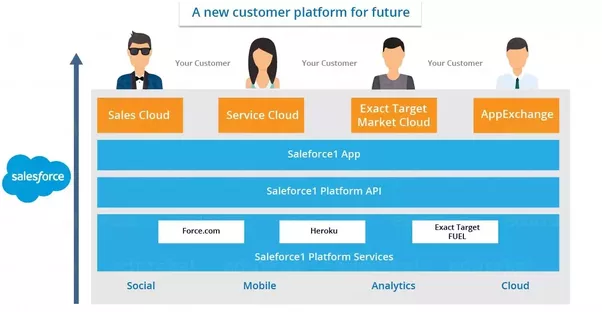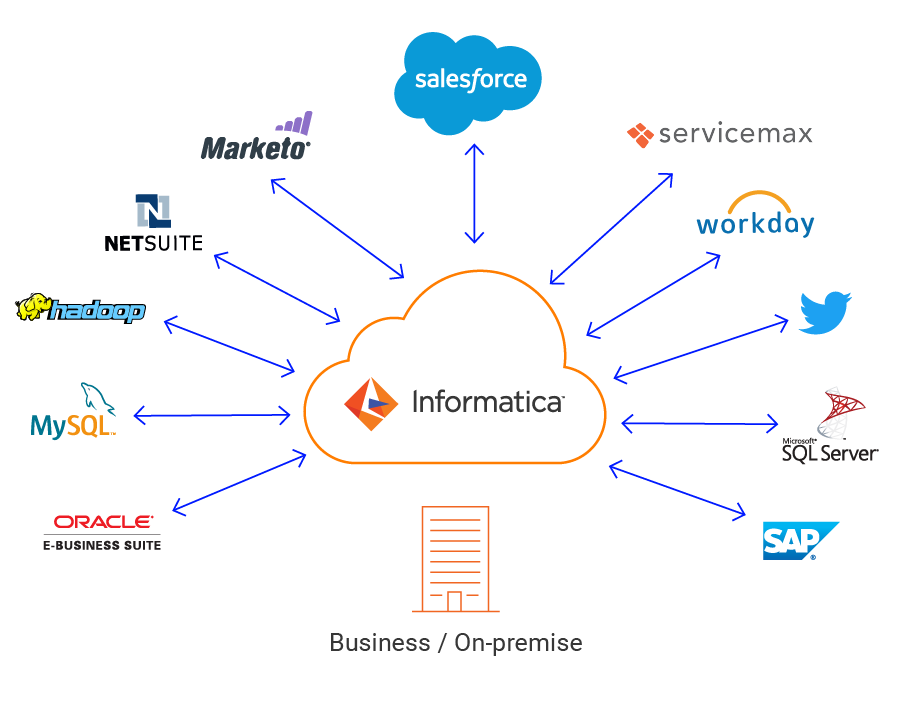What is the main purpose of Salesforce?
It helps automate business processes and extend powerful APIs for added security. Tools in the App Cloud include: Force.com, a platform as a service (PaaS), allows admins and developers to create websites and applications with Apex that integrate into the main Salesforce.com application.
What exactly does Salesforce do?
Salesforce is a cloud computing company which offers a variety of services (SaaS) and products (PaaS). Salesforce started as Software as a Service (SAAS) CRM company. Salesforce now provides various software solutions and a platform for users and developers to develop and distribute custom software.

Salesforce is the world's #1 Customer Relationship Management (CRM) platform. Our cloud-based applications for sales, service, marketing, and more don't require IT experts to set up or manage — simply log in and start connecting to customers in a whole new way.
Salesforce is a top-notch CRM application built on the Force.com platform. ... Salesforce handles all the customer relationships, by focusing on the sales, marketing and support processes. This is done by working with the standard objects (Shown below), and facilitating the relationships between them.

Evaluating your current sales force is an important step in the process of deciding whether and how to grow your sales team. If your existing sales force is fine and will be more than adequate to fuel future growth, you can keep the number of people the same and simply add some additional training or perhaps a revamped compensation package. On the other hand, your sales force may need to grow by a few heads, or you may choose to stay the same size but have different people filling the sales positions.
Step one in evaluating your sales force is to decide what you want it to do for you. For some companies that do most of their selling through mail order or the Internet, a sales force is strictly an option. In this case, you may expect your sales force to handle only the larger accounts, leaving the smaller orders to customer service personnel and order-takers. For other companies, however, the salesperson is the most visible-and perhaps the only--outward manifestation of the company seen by customers. This type of salesperson carries a heavy load. He or she has to uphold the company's image, hold the customers' hands, interface with delivery and repair departments at headquarters, and, of course, get the sale.
It won't require a lot of thought for you to come up with a good description of what you want your sales force to do. Make sure you're not evaluating your sales force based on some other company's needs. For instance, if your salespeople are primarily charged with following up on leads generated by your advertising, don't penalize them if they aren't making a lot of cold calls. Once you decide what jobs your sales force is intended for, simply check their performance against the requirements. The key measure when it comes to evaluating a sales force is sales productivity.
The simplest measure of sales productivity is the dollar amount of sales per salesperson. That's easy enough to figure out: Just divide the volume of sales by the number of salespeople on staff. That will give you an average sales productivity figure and let you know how the average salesperson in your organization is doing. More useful, though, is to know how each individual salesperson is doing compared to the average. You may have a handful of relatively productive people who are carrying the load for a raft of underperformers. This is the kind of information you'll need to know to decide whether to make a change.
Be warned, though: Sales productivity may involve more than simply generating dollars of sales. Your sales force may be moving a lot of product now but costing you sales later by alienating customers with poor service. They may be making promises you can't deliver on, overburdening your production and shipping departments. They may be selling a lot of the wrong products (items with low margins or high support costs) while ignoring your more profitable lines. Check to see if certain salespeople have large numbers of returns or tend to sell to customers who don't pass credit checks. These salespeople could be costing you more than they are worth.
Adding salespeople can result in steadily increasing sales. This can free you up to spend time and energy on other tasks. Hiring salespeople could also hurt sales, erode profits, damage valuable customer relationships, and destroy your image in the marketplace. The difference between these two scenarios is the difference between hiring the right salespeople and the wrong ones.
Salespeople are not just the people responsible for building your bottom line. They're also your front-line troops, the ones with the most daily contact with your customers. With those caveats in mind, it's important to not only grow your sales force, but to grow it properly.
To start with, understand that there may not be any truly bad salespeople. There may just be good salespeople in the wrong positions. To hire the right salesperson for the job, you have to understand and be able to describe what the job is. That means clarifying whether this sales position is intended to immediately generate sales or perhaps develop contacts for a sales cycle that may stretch into months or years. Do you want someone who is a closer or one who takes more of a consultative approach? Matching your company's sales needs and selling style to your new hires is the first step in getting good salespeople.
Few salespeople are motivated by altruism, and misunderstanding your company's compensation package is one of the main reasons for sales staff dissatisfaction and turnover. For all potential new hires, explain precisely what the compensation plan is. In addition, clarify the territory, your performance expectations, any training you will offer, and any sales tools you will provide. You should also provide candidates with a thumbnail description of the market and the competition. Then you will know that you have explained the opportunity accurately to anyone who is interested.
Don't stop by describing your needs. Imagine the ideal salesperson for the job, including his or her personality, experience, energy level, reputation and abilities. You may not find someone exactly like that, but if you don't know what you want, the odds of making a bad hiring decision are high.
Only now should you actually start looking for salespeople. But before dashing out a three-line ad and calling the classified department of your local newspaper, consider some other options:
Look internally. You may have technical, support, operations or administrative people who would and could successfully move into sales. Post the ad on a bulletin board and see what happens.
Ask for employee referrals. Chances are your existing employees know the kind of people who would be happy working for you. They may be able to suggest some people for you to contact.
Network with suppliers, customers, colleagues, advisors and social contacts. This can be cheaper, faster and more reliable than advertising to the general public.
Check with professional associations. They may have job lines to help members find employees.
Try online advertising. The speed, freshness and searchability of online job banks make them attractive options for both candidates and employers.
Check with your local college. You may be able to hire a recent graduate who is enthusiastic, effective and less expensive than a seasoned professional.
Contact headhunters. Headhunters specializing in sales personnel aren't cheap, but when labor markets are tight, it may be worth the cost to find a solid salesperson.
Consider using temporary and staffing services. Temporary and staffing services can provide you with sales and marketing personnel on a temporary, temp-to-perm, or permanent direct-hire basis.
